Gentrificatione e Agenda UN 2020-2030
Abstract
Ma è giusto che i centri storici, i luoghi più pregiati delle città, siano soggetti a gentrification? Ovvero all’espulsione dei residenti originari e delle attività tradizionali, storiche, che sono l’anima di tali luoghi: cosa peraltro ben evidenziata nella Convenzione europea del paesaggio del 2000.
Vi sono alcuni paradossi che legano le politiche di tutela in atto da qualche anno ed esiti di esse. Le isole pedonali nate in Italia quasi 40 anni fa con la prima pedonalizzazione del Colosseo e poi le ZTL, inizialmente contrastate dai commercianti, nel medio-lungo periodo hanno significato diffusione di negozi per redditi alti e shops internazionali che hanno soppiantato le botteghe storiche. La trasformazione ecologica di parte della novecentesca high-line a Manhattan ha comportato innalzamento dei valori immobiliari dell’area cioè aumento di prezzi di vendita ed affitti e quindi la sostituzione di residenti ed attività.
La sfida che oggi fronteggiamo è come mantenere l’identità di luoghi che vengono trasformati od anche solo recuperati, anche per renderli sostenibili come richiesto dalla UN. E come conservare la loro componente umana, essenziale parte di tale identità e pure tra gli obiettivi della Carta 2020 – 2030.
Questi sono i temi che si trattano nel paper, in cui più che risposte si evidenziano le domande che sempre più stanno caratterizzando la contemporaneità che comunque deve muoversi “entro” gli obiettivi/limiti posti da Agenda UN 2020 – 2030.
Gentrification and UN 2020-2030 Agenda
But is it right that historic centres, the most prized places in cities, are subject to gentrification? In other words, the expulsion of the original residents and traditional, historical activities, which are the soul of these places: something that is well highlighted in 2000 European Landscape Convention .
There are some paradoxes that link the protection policies in place for some years to their results. The pedestrian islands born in Italy nearly 40 years ago with the first pedestrianization of the Colosseum and then the ZTL, initially opposed by the traders, in the medium-long period have meant spread of shops for high incomes and international stores that have supplanted the historic shops. The ecological transformation of a part of the twentieth-century high-line in Manhattan has led to an increase in the real estate values of the area that is growth in sales prices and rents and therefore the replacement of residents and activities.
The challenge we face today is how to maintain the identity of places that are transformed or even just recovered, also to make them sustainable as required by the UN. And how to preserve their human component, essential part of this identity, even among the objectives of the Charter 2020 - 2030.
Parole chiave
Full Text
PDFDOI: https://doi.org/10.14633/AHR165
Refback
- Non ci sono refbacks, per ora.
Copyright (c) 2019 Stefano Aragona

This work is licensed under a Creative Commons Attribution-NonCommercial 4.0 International License.
........................................................................................................................................................................................................................................................................................................................................................
ArcHistoR è una rivista open access e peer reviewed (double blind), di Storia dell’architettura e Restauro, pubblicata dall’Università Mediterranea di Reggio Calabria. La rivista ha cadenza semestrale. È una rivista di Classe A (ANVUR) per l’Area 08 - Ingegneria civile ed Architettura, settori C1, D1, E1, E2, F1.
Comitato scientifico internazionale
Maria Dolores Antigüedad del Castillo-Olivares (Universidad Nacional de Educación a Distancia de España), Monica Butzek (Kunsthistorisches Institut in Florenz), Jean-François Cabestan (Université Paris 1 - Panthéon Sorbonne), Alicia Cámara Muñoz (Universidad Nacional de Educación a Distancia de España), David Friedman (Massachussets Institute of Technology), Alexandre Gady (Université Paris-IV-Sorbonne), Jörg Garms (Universität Wien), Miles Glenndinning (Scottish Centre for Conservation Studies, University of Edinburgh), Mark Wilson Jones (University of Bath), Loughlin Kealy (University College Dublin), Paulo Lourenço (Department of Civil Engineering, University of Minho), David Marshall (University of Melbourne), Werner Oechslin (ETH, Zurich, Stiftung Bibliothek Werner Oechslin, Einsiedeln), José Luis Sancho (Dirección de Conservación de Bienes Histórico-Artísticos, Palacio Real, Madrid), Dmitrij O. Švidkovskij (Moscow Architectural Institute, MARCHI)
Comitato direttivo
Tommaso Manfredi (direttore responsabile), Giuseppina Scamardì (direttore editoriale), Antonello Alici, Salvatore Di Liello, Fabrizio Di Marco, Paolo Faccio, Mariacristina Giambruno, Bruno Mussari, Annunziata Maria Oteri, Francesca Passalacqua, Edoardo Piccoli, Renata Prescia, Nino Sulfaro, Fabio Todesco, Guglielmo Villa
........................................................................................................................................................................................................................................................................................................................................................
Laboratorio CROSS. Storia dell'architettura e Restauro

ISSN 2384-8898

This work is licensed under a Creative Commons Attribution-NonCommercial 2.0 Generic License.

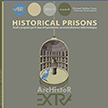
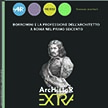
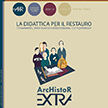

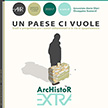
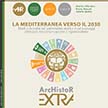
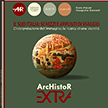
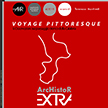
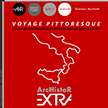
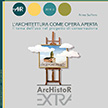
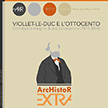

_2.jpg)



